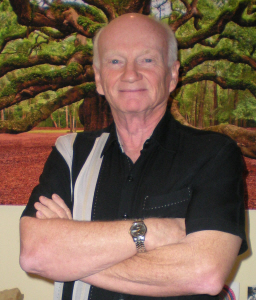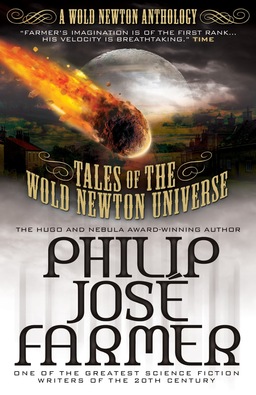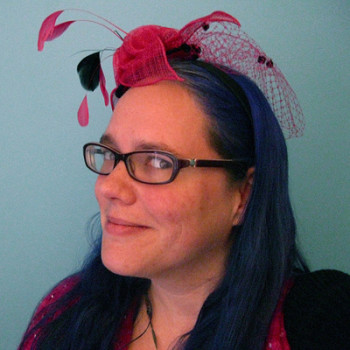Magic, and Miracles: An Interview with Bruce McAllister
 Bruce McAllister lives in idyllic old town Orange, California. Outside his 1914 craftsman-style home, wild parrots squawk as they fly overhead from sweet gum tree to palm tree to an aged church bell tower in the distance. Inside, the home is neat and sparsely furnished. The only semblance of clutter is in McAllister’s writing office, where the desk is smattered with a few sheets of loose-leaf paper, and where along the sidewall, piled on top of a fold-out table and in plastic bins beneath it, he keeps his cobble collection. These fossil-riddled rocks are from the Santiago Creek riverbed where he routinely walks with his dog Madge. Like the seashell collection he had as a boy — and which plays a prominent role in his newest novel, The Village Sang to the Sea: a Memoir of Magic — these cobbles are a reminder of the wonder in the world around us, “rationale mysticism,” as he calls it.
Bruce McAllister lives in idyllic old town Orange, California. Outside his 1914 craftsman-style home, wild parrots squawk as they fly overhead from sweet gum tree to palm tree to an aged church bell tower in the distance. Inside, the home is neat and sparsely furnished. The only semblance of clutter is in McAllister’s writing office, where the desk is smattered with a few sheets of loose-leaf paper, and where along the sidewall, piled on top of a fold-out table and in plastic bins beneath it, he keeps his cobble collection. These fossil-riddled rocks are from the Santiago Creek riverbed where he routinely walks with his dog Madge. Like the seashell collection he had as a boy — and which plays a prominent role in his newest novel, The Village Sang to the Sea: a Memoir of Magic — these cobbles are a reminder of the wonder in the world around us, “rationale mysticism,” as he calls it.
Similar to Brad Latimer, the protagonist in The Village Sang to the Sea, McAllister grew up in a military family and lived in Italy for a time. Like Brad, his hunchback teacher caught him writing a story one day and, rather than punish him, the teacher encouraged him.
When he was sixteen, McAllister became nettled with another teacher, this one back in the United States, who was overemphasizing the importance of symbolism in literature. In an act of annoyed defiance, McAllister wrote a now famous letter, which he sent to 150 authors, including the likes of Ray Bradbury, Isaac Asimov, and Fritz Leiber, wherein he asked their thoughts on symbolism in their work and whether it was ever purposeful. To his surprise, the vast majority of the authors wrote back. “It was a miracle they responded,” he says.





